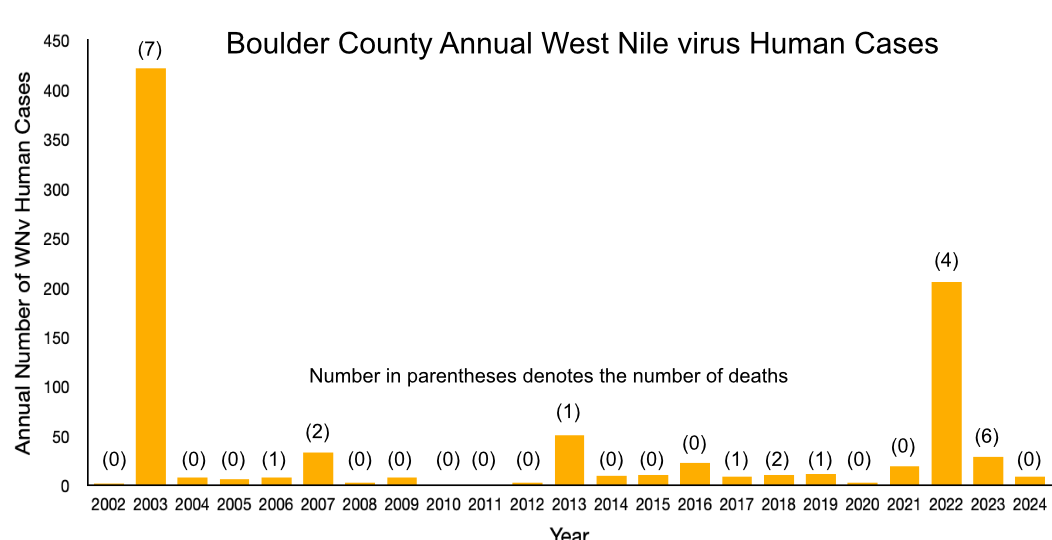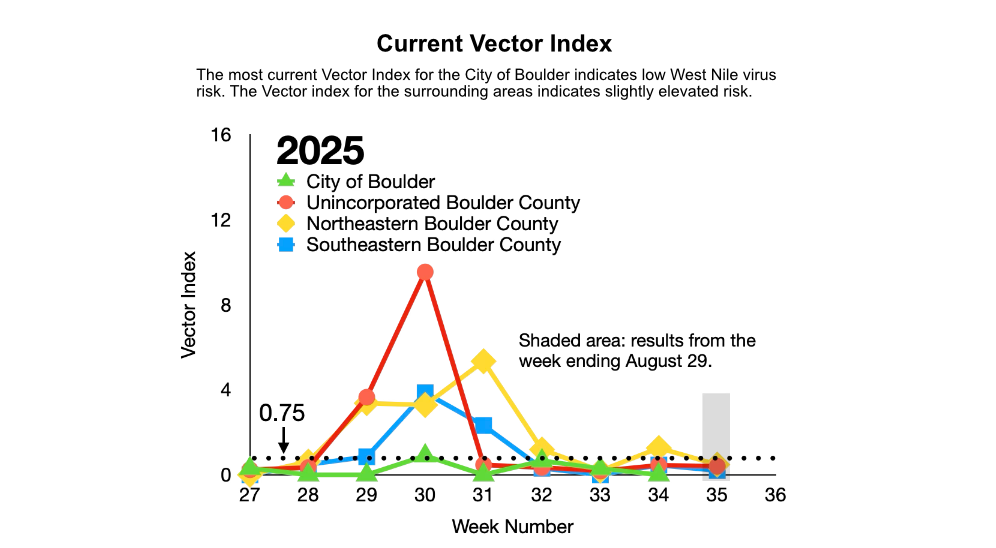West Nile virus (WNv) is a disease that is transmitted from mosquitoes to people. In Colorado, only three species of the Culex group of mosquitoes that effectively transmit WNv. Culex mosquitoes feed on birds that can act as a reservoir for the virus. Once WNv reaches a high enough level in the bird population, mosquitoes are more likely to become infected, and then the virus can be transmitted to humans when bitten by an infected mosquito.
Holiday Closures
In observance of the Christmas and New Year’s holidays, the City of Boulder is adjusting its operations schedules.


